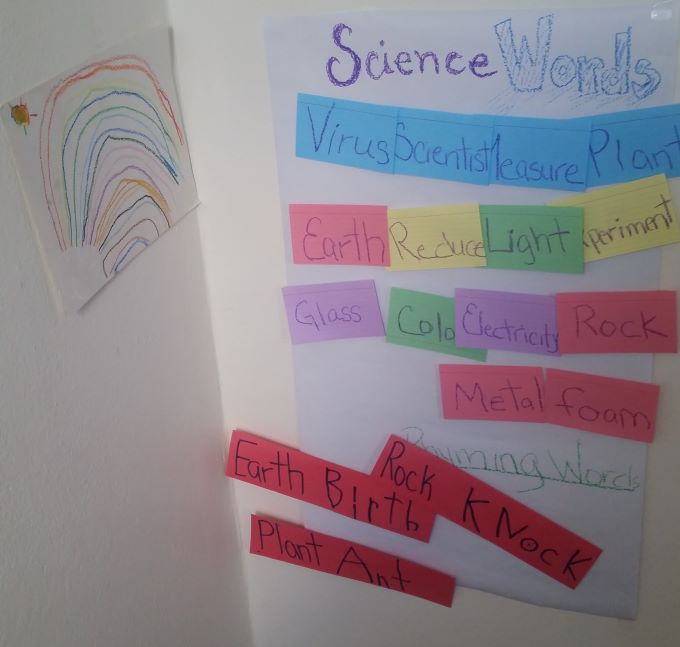I once had a spring stuck inside
Through my window I stared open-eyed
To the birds and bees
And the flowers and trees
And it wasn’t so bad from inside.
As winter turns to spring and the urge to get outside grows, it is important to remember that staying inside right now protects everyone and the better we are at it the faster it can end. You can still admire nature from the comfort of your living room though with the added bonus of avoiding those spring allergies!
This week the Van Cortlandt Park Alliance urges you to explore your creative side and try your hand on some poet-tree. Poet-Tree is a fun activity from Project Learning Tree that encourages you to create a word wall of nature based words you can use to create poems about nature with (or other STEM topics if you choose). Above photo from VCPA staff member and her 5 year old son doing the activity as part of distance learning while home.
Remember to post your poems on social media and tag @vcpalliance for us to be inspired by.
Below is some information about different types of poems you can use for guidance as you and your child fill the spring with free verse, the flow of a limerick or the deceiving simplicity of a haiku.
Five types of Poems for Elementary School
Narrative Poetry
Narrative poems combine plots with verse. These narratives can be long or brief and may include or exclude a rhyme scheme. These poems can also cover a variety of different subjects. For example, epic poems are a type of narrative poetry that describes the heroics of a certain individual. Idylls, on the other hand, are narratives that describe events in country settings.
Haiku Poetry
Haiku poetry originated in 13th-century Japan. In most cases, these poems present five syllables in the first line, seven in the second line and five syllables in the final line. While haiku poetry can address any subject, traditional haiku tend to place emphasis on nature.
Limerick Poetry
Limericks contain five lines and a distinct rhyme scheme. The first, second and fifth lines end in words that rhyme with each other; meanwhile, the final words in the third and fourth lines rhyme with one another, but not necessarily the rest of the poem. Limericks often deal with comedic or absurd subjects. Mother Goose nursery rhymes used easily memorable limericks to appeal to younger audiences.
Free Verse Poetry
Free verse poems aren’t restricted by rules. Rhyming and rhythm is optional and, in some cases, lineation can take on unusual patterns. The famous poet Robert Frost compared free verse poetry’s disregard for structure to playing tennis without a net. Free verse poems can address any subject matter.
Lyrical Poetry
Lyrical poetry places emphasis on moods and emotions. Lyrical poems are often accompanied by music, resulting in song lyrics; however, this is not always the case. Some examples of lyrical poetry include ballades — poems with a French origin — or odes — poems that glorify important people and events — as well as sonnets, which Shakespeare employed in many of his works.
Click here to change this text


